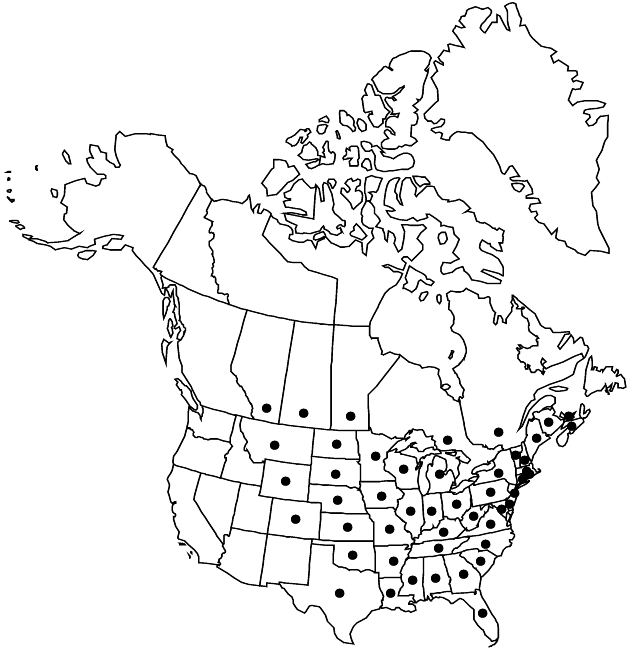Difference between revisions of "Solidago gigantea"
Hort. Kew. 3: 211. 1789.
FNA>Volume Importer |
imported>Volume Importer |
||
| Line 8: | Line 8: | ||
}} | }} | ||
|common_names=Tall or giant or smooth goldenrod;verge d’or géante | |common_names=Tall or giant or smooth goldenrod;verge d’or géante | ||
| + | |special_status={{Treatment/ID/Special_status | ||
| + | |code=E | ||
| + | |label=Endemic | ||
| + | }} | ||
|basionyms={{Treatment/ID/Basionym | |basionyms={{Treatment/ID/Basionym | ||
|name=Solidago serotina | |name=Solidago serotina | ||
| Line 116: | Line 120: | ||
|publication title=Hort. Kew. | |publication title=Hort. Kew. | ||
|publication year=1789 | |publication year=1789 | ||
| − | |special status= | + | |special status=Endemic |
| − | |source xml=https:// | + | |source xml=https://bibilujan@bitbucket.org/aafc-mbb/fna-data-curation.git/src/bb6b7e3a7de7d3b7888a1ad48c7fd8f5c722d8d6/coarse_grained_fna_xml/V19-20-21/V20_339.xml |
|tribe=Asteraceae tribe Astereae | |tribe=Asteraceae tribe Astereae | ||
|genus=Solidago | |genus=Solidago | ||
Revision as of 20:47, 27 May 2020
Plants 50–200 cm (solitary or clustered); rhizomes short- to long-creeping. Stems 1–20+ or clustered, erect, glabrous or sparsely strigose in arrays, sometimes glaucous. Leaves: basal 0; proximal cauline usually withering by flowering time, sessile, lanceolate, 91–97 × 10–14 mm, margins sharply serrate, 3-nerved, apices acuminate, abaxial faces pilose on nerves or glabrous; mid to distal cauline similar, 57–76 × 0.7–1.2 cm, largest toward mid stem, decreasing distally. Heads 40–600, secund, in broadly secund, pyramidal paniculiform arrays, rarely rhombic or club-shaped, proximal branches divergent, recurved, glabrous-glabrate or strigose, sometimes glaucous. Peduncles 1.5–3 mm, sparsely to densely strigillose; bracteoles 0–2, linear-lanceolate. Involucres campanulate, (2–)2.5–4(–5) mm. Phyllaries in 3–4 series, unequal, acute; outer lanceolate, inner linear-lanceolate (hexaploids from far west can have minute stipitate glands, especially near base of outer phyllaries and peduncle bracts). Ray florets (7–)9–15(–24) (conspicuous); laminae 1–3 × (0.1–)0.2–0.4 mm. Disc florets (4–)7–12(–17); corollas (2.5–)3–3.5(–4.5) mm, lobes 0.6–1(–1.4) mm. Cypselae 1.3–1.5 mm, sparsely strigose; pappi 2–2.5 mm. 2n =18, 36, 54.
Phenology: Flowering Aug–Sep(–Oct).
Habitat: Usually at least seasonally moister soils, flood plains, ditches, depressions, open woods, and thickets, moist depressions in grasslands and parklands on Great Plains
Elevation: 0–1500+ m
Distribution

Alta., Man., N.B., N.S., Ont., P.E.I., Que., Sask., Ala., Ark., Colo., Conn., Del., Fla., Ga., Ill., Ind., Iowa, Kans., Ky., La., Maine, Md., Mass., Mich., Minn., Miss., Mo., Mont., Nebr., N.H., N.J., N.Y., N.C., N.Dak., Ohio, Okla., Pa., R.I., S.C., S.Dak., Tenn., Tex., Vt., Va., W.Va., Wis., Wyo., introduced in Mexico.
Discussion
Solidago gigantea is usually the least hairy species of the S. canadensis complex. The stems may be somewhat glaucous and the array is usually somewhat more open than in S. canadensis and S. altissima, and less leafy than S. lepida. Its blooming season begins and ends earlier than S. altissima in eastern North America. The species is diploid, mostly east of the Appalachian Mountains, tetraploid throughout the eastern forest area, and hexaploid on the prairies. The broader-leaved hexaploids on the prairies have been treated as S. shinnersii; G. H. Morton (1984) indicated that the differences are not diagnostic. Reports of hexaploids in the mountains from Alberta, Idaho, Oregon, Washington, and northwestern Wyoming all have minute stipitate glands on the phyllaries, peduncle bracts, and sometimes the distalmost leaves; such plants belong in S. lepida, as do plants from British Columbia. Stems sometimes have 1–2 elongate insect galls near the base (S. Heard, pers. comm.). Although reported from much of Florida, specimens were seen only from Liberty County; all other collections are S. leavenworthii.
Selected References
None.